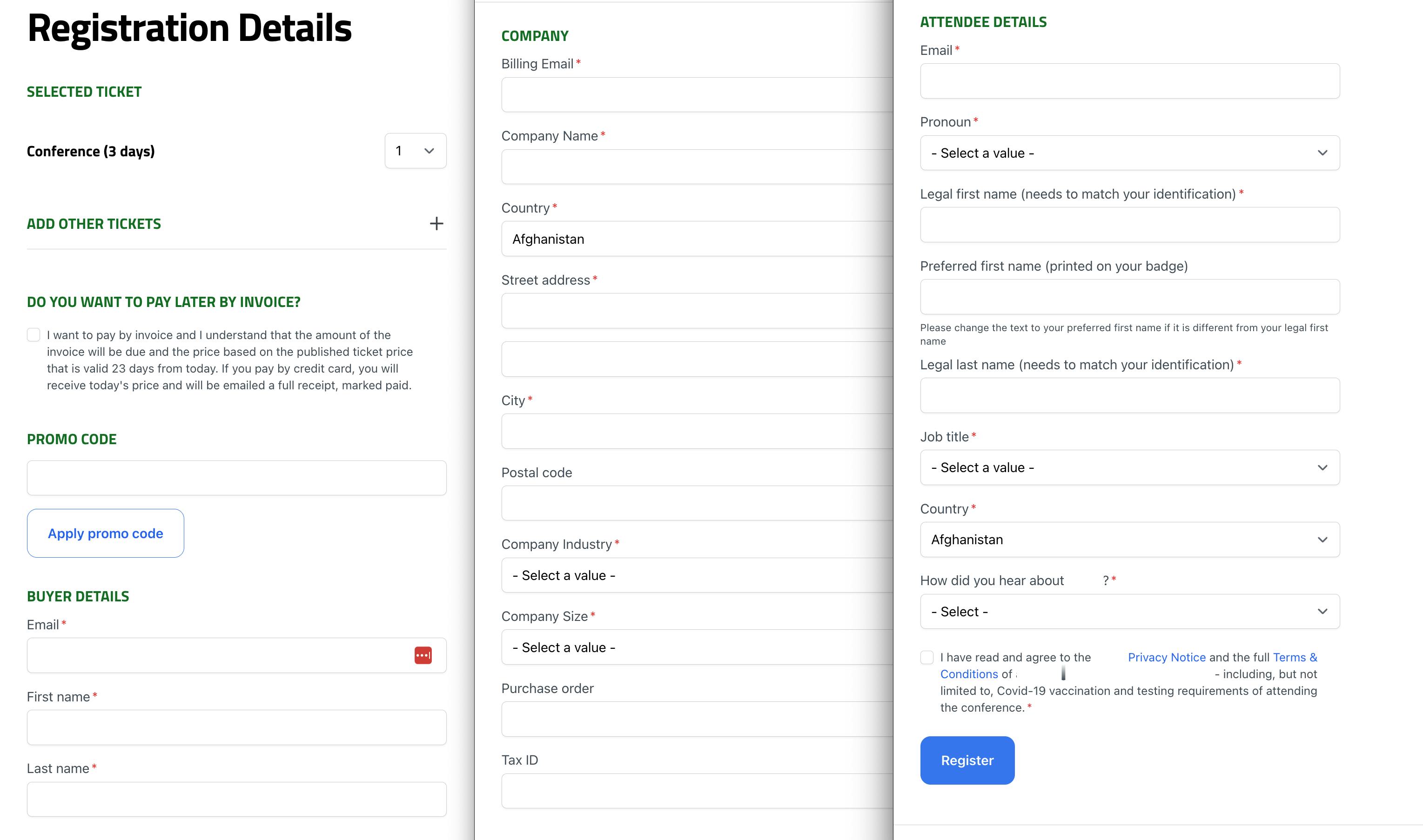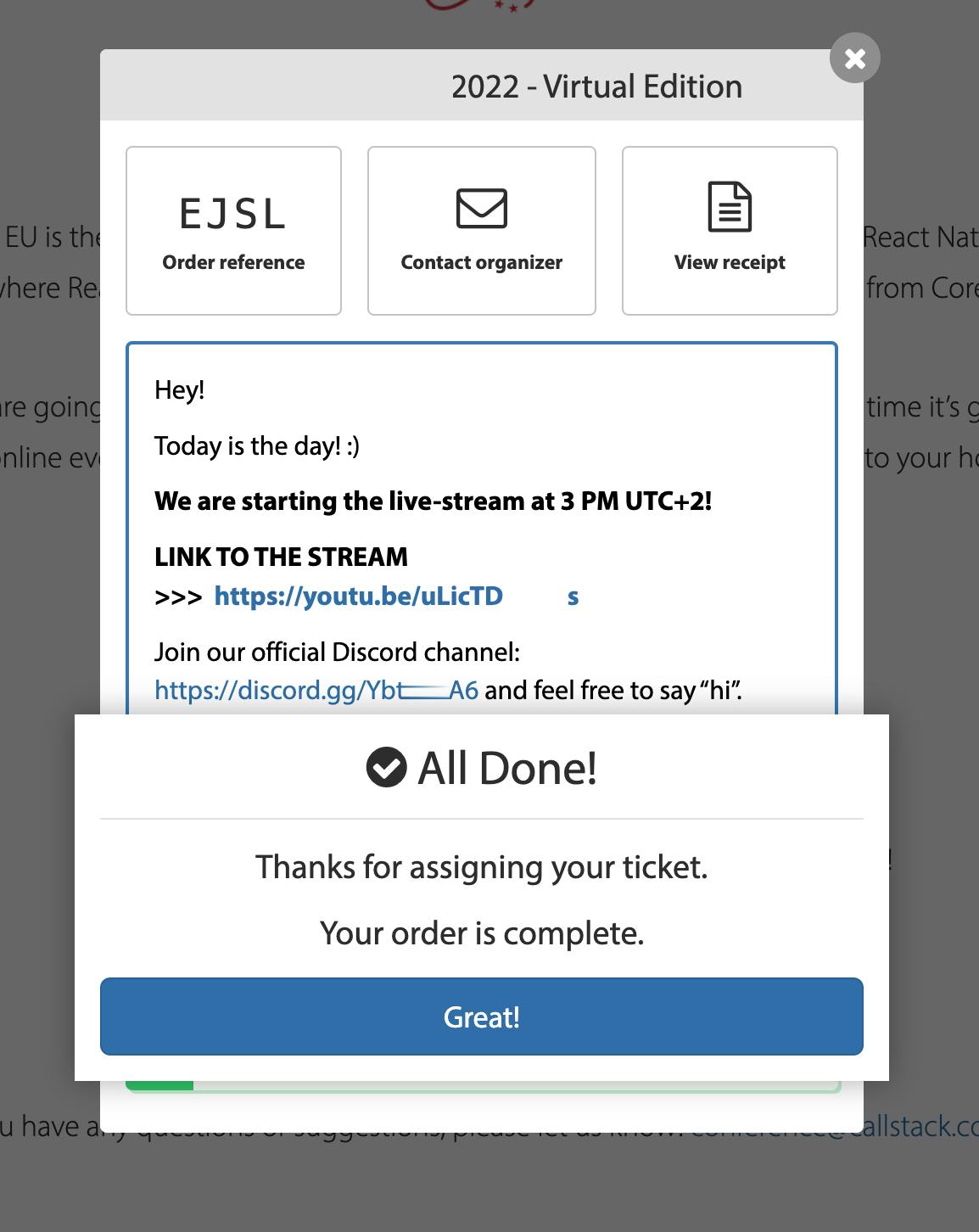The NFT movement got one thing right - people want digital art that signals their membership of an in-group, and to feed our status vanity.
Vercel realized this early on, beginning with backendlessConf_ in 2019 and then pioneering the ticket format with Nextjs Conf in 2020 and then Next.js Conf Special Edition and Next.js Conf in 2021.
Here are the publicly reported registration numbers for each conference:
- 2019: 3,888
- Dec 2020: between 70,000 and 82,000+
- June 2021: over 65,000 for a "Special Edition"
- Oct 2021: at least 70,000
Registration for 2022 has just started today, with another new ticket visual:
the conference page itself being a moderately successful Show HN for 5 hours, with 2 designers and Dall-E
Contrast this to the usual signup flow of other conferences, where you either have to provide enough info to get Pentagon clearance:

Or the post-signup flow thanks you but gives you no incentive whatsoever to spread the word:

You've seen a billion of these. They are leftovers from the days of in-person conferences, when marginal cost was not zero, ticket price wasn't free, and therefore word of mouth and virality/FOMO got you less far than pimping out your speakers and buying ads.
Step 1: Vanity, thy name is Registrations
I often think of devrel metrics as coming in pairs: a Vanity number, and an Honesty number. It may be easy to goose one up but the other keeps you honest. For every Subscribers/Followers count there is a Watch Time. For every Unique views there is a Click Through Rate. And so on.
The increasingly beautiful tickets, with their embedded ticket number subtly hinting at the number of signups AND a person's place in the queue, take advantage of a unique asymmetry for online conferences: Registrations are all you need.
- Big numbers is all anyone - sponsors, speakers, investors, even other attendees - cares about
- Registrations are the biggest numbers of any conference (being top of funnel).
Yes, you do care about other metrics: live attendance, and async viewership, and leads, and all that other stuff.
But they are:
- correlated with Registrations
- smaller than Registrations (less interesting to brag)
- harder to measure (do you want peak or average? within what window?)
Keep it simple.
Registrations.
The Non Fungible Ticket strategy recognizes that building hype for a conference is as important as the content for the conference itself, in terms of tangible business impact.
How do you spread word of mouth like wildfire?
People like sharing art.
People love sharing personal art.
Step 2: Go Overboard on Design
Put the attendee on the ticket. Face, name, github handle. People are most interested in themselves.
Bonus: make custom avatars for each speaker like React Advanced.
Make tickets that employees brag about without being forced to:
Add easter eggs that aren't lame:
Followup with a call to action on email in case they missed it:

Usually, conference websites are outsourced to a contractor, or left in the hands of 1-2 designer-developers. Vercel's conf landing page took 14+2 people.
Is there more to conferences than being really, really... really ridiculously good looking?
Step 3: Open Source Adoption
Developers suck at design, so once you have a great design template, that has been validated ("if its good enough for Nextjs Conf, its good enough for me"), you will be copied endlessly. Since Vercel open sourced their Virtual Event Starter Kit in Dec 2020, it has been adopted by:
And even adapted for non-tech events.
and adopted as a template by every CMS partner of Vercel's.
Other organizations like StackBlitz and Vite have taken the ticket idea on its own:
Other Hyped Online Conferences
What other successful strategies have been adopted by online-native conferences?
I have in mind:
- HYTRADBOI: hytradboi.com
- All lightning talks, all prerecorded, 2 tracks
- Known curator
- Entertaining topics/unusual tech that break the norm
- Performance youtube.com/watch?v=-PX0BV9hGZY
- Skits/editing (not slide deck) hytradboi.com/2022/your-frontend-needs-a-da.. More talk genres swyx.io/cfp-advice#pick-a-genre
- Vicki Boykis: twitter.com/vboykis/status/1565505261162446..
- GitHub let you create your own OctoCats (Octodex) (excitement here)
Update
1 day after launch, Next.js Conf 2022 is already boasting 30k registrations and reminding people that they have an easter egg:
